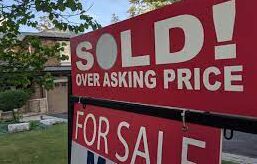
While the number of new homes rose by 4.2% in the U.S. last year, this was primarily led by a 22% increase in the multifamily sector. Single-family housing permits, meanwhile, slowed in 70% of U.S. metropolitan areas, which could forecast more challenges ahead for an already strained level of supply.
This is according to an analysis conducted by Point2, which examined metrics including single-family and multifamily completions in 2023, as well as corresponding permits issued. The findings are based on historic data from the U.S. Census Bureau and the U.S. Bureau of Labor Statistics from 2013 to 2023.
The impact is likely to be most felt in the nation’s largest metro areas. In places like San Francisco; New York; Seattle; San Antonio; Rochester, New York; and Kansas City, permits dropped by more than 30% from 2022 to 2023. This has the potential to add even more economic pressure for prospective buyers looking for homes in these parts of the country, the analysis stated.
“Fewer homes under construction and falling permits mean dwindling options for future buyers, adding more pressure to a market already strained by tight supply,” Point2 said. “Coupled with the fact that new single family homes are dropping, this could point to a shift towards bolstering the rental sector rather than relieving the pressure on the homes for sale front.”
The total number of homes under construction fell by 9% in 2023 while the number of permits dropped 11% year over year.
Elevated interest rates and other issues that drive up costs are also likely to keep prospective buyers on the sidelines for years to come, the analysis said.
“Theoretically, new construction should be bolstered by the acute shortage of housing on the market,” Point2 said. “However, with supply chain issues piling up and loan rates for builders continuing to rise, developers’ confidence is going in the opposite direction.
“And, as both builders and home sellers become more cautious and keep to the sidelines to try to insulate themselves from the negative effects of rising rates and financial uncertainty, their withdrawal might negatively affect supply and affordability in the near future.”
Builder confidence, however, improved for a third straight month in February, according to on survey data from the National Association of Home Builders (NAHB). In January, NAHB attributed this confidence spike to interest rate moderation, but rates have fluctuated more frequently in the month since that data was published.
“And as a further reminder that the recovery will be bumpy as buyers remain sensitive to interest rate and construction cost changes, the 10-year Treasury rate is up more than 40 basis points since the beginning of the year,” NAHB chief economist Robert Dietz said earlier in February.



